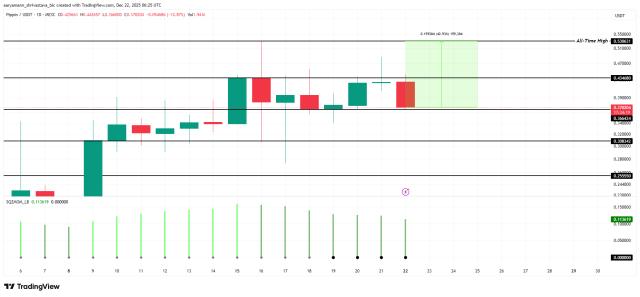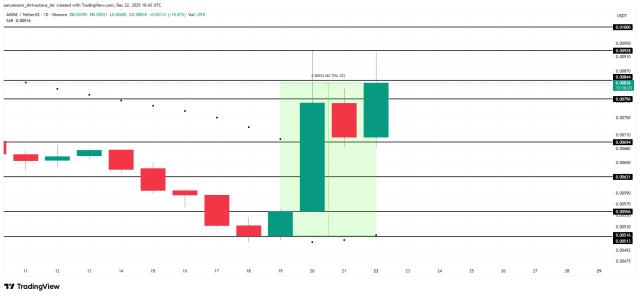
Key indicators: (July 22, 4pm -> July 29, 4pm Hong Kong time):
- BTC/USD +3.4% ($67,240 -> $69,500), ETH/USD -3.2% ($3,480 -> $3,370)
- BTC/USD December (end of year) ATM volatility -11% (68.5 -> 61.1), December 25d RR volatility -45% (7.3 -> 3.3)

- BTC price continued to climb after a local breakthrough last week (triggered by liquidation in traditional financial markets) — initial support is at 68–68.25k, with stronger support at 66.75–67k.
- The top major resistance level is around 70k-70.25k; if it can be completely broken through, it will challenge the historical high again.
- If it falls below 66.75k, there could be a period of volatile consolidation in the 63.5–67k range.
Market events:
- The ETH ETF launched on July 23 still failed to drive up the spot price, ETH long positions were liquidated, and the ETH/BTC exchange rate fell below 0.05.
- At the highly anticipated Bitcoin 2024 summit, Trump delivered a keynote speech. In addition to his usual pro-cryptocurrency remarks, he also announced that after he takes office, the United States will not sell its BTC holdings, but will use them to build strategic reserves (but did not mention previous rumors about purchasing new BTC to build reserves).
- Before the launch of the ETH ETF and Trump's speech, the front-end implied volatility of BTC and ETH fluctuated violently, and the high-frequency actual volatility was strong during the event, but the final actual volatility was much lower than the implied volatility.
- Traditional financial markets have seen higher volatility, while macro trades have been rapidly closed, and there has been clear differentiation and sector rotation within the stock market.
ATM Implied Volatility:

- Implied volatility for short-term contracts has fluctuated significantly this week, especially during Trump's keynote speech at the Bitcoin 2024 Summit, where related straddle premiums were concentrated in the 4.0–5.5% range. Despite the bullish announcement, the spot price failed to break through 70k, causing the implied volatility of the front-end futures contract to fall significantly after the event, waiting for a new trigger to continue to push the spot price up. The cryptocurrency market schedule is relatively quiet in the coming week, and the market focus will turn to the Federal Reserve. Given the recent trend of US data, the market expects a 15% probability of a rate cut.
- At further out (September and beyond), despite BTCUSD spot hitting new highs this week, implied volatility is still trending downwards as the bullish narrative is not gaining much traction and demand for the long-term top is weak. Meanwhile, notice the large supply of the December top contract.
- Although the BTC/USD spot price hit a new high this week, the implied volatility has been steadily declining in the longer-term (September and beyond). This is due to the market's bullish sentiment gradually calming down and the demand for buying long-term call options has also weakened. At the same time, it is also noted that there is a large supply of December call options.
- High frequency realized volatility has risen during the event, approaching 50 (from the low 40s last week), while intraday fixed realized volatility is also close to 50, although it underperforms during the actual meeting event.
Skewness/Convexity:

- The slope of implied volatility this week has declined significantly (the premium of IV on the bullish side relative to the bearish side has narrowed), and the slope of implied volatility has completely retraced last week's increase and further declined.
- It is observed that the correlation between spot price and implied volatility is negative for expiring contracts further forward in the curve, i.e., as spot price increases, implied volatility decreases.
- This is mainly due to the continued year-end call supply this week, while the demand observed last week has weakened. If the spot price fails to break through 70k and returns to the established range, we can expect the slope of implied volatility to face further pressure.

- The convexity change this week was relatively flat, consistent with the downward adjustment of the benchmark volatility, and faced certain downward pressure.
- While volatility remains elevated in the current environment, the correlation of risk reversals to spot has weakened locally due to supply and demand dynamics, and therefore the expression of convexity has also weakened locally.
- While volatility remains elevated in the current environment, the correlation between risk reversals and spot has weakened locally due to changes in supply and demand dynamics, weakening the manifestation of local convexity.
- Overall, we continue to observe structural supply of wing premiums in covered strategies and call spreads, with wing option selling also increasing this week.
Good luck this week!








